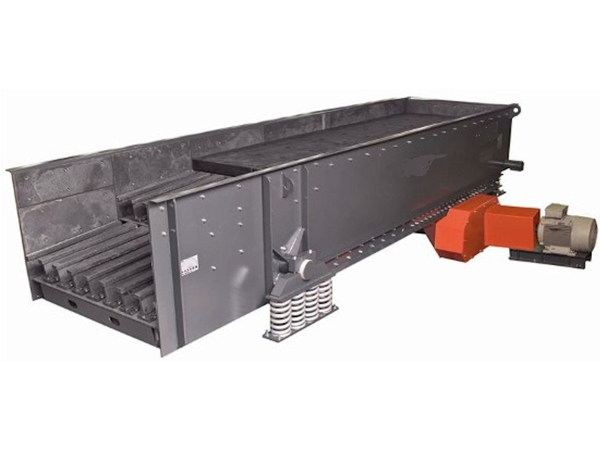What to do if the vibrating feeder unloads slowly
A vibrating feeder that unloads slowly can be problematic for many operations, as it can hinder productivity and efficiency. Here are several potential reasons and corresponding troubleshooting steps to address the issue:
Potential Causes and Solutions

Improper Feeder Settings
Amplitude and Frequency: Ensure that the amplitude and frequency settings of the vibrating feeder are set correctly according to the material being processed. Increasing the amplitude might help if the material is not flowing adequately.
Angle of Incline: The feeder should be positioned at an optimal incline angle. Adjusting the angle may improve the flow rate of the material.
Material Properties
Material Flow Characteristics: Some materials are inherently difficult to move due to their cohesiveness, stickiness, or particle size. Ensuring the material is free-flowing and not bridging or clumping can help.
Moisture Content: High moisture content can cause materials to stick together, reducing flow. Reducing moisture content or using dehumidifiers can mitigate this issue.
Feeder Design Issues
Feeder Tray Design: The design of the feeder tray should match the material properties. For example, certain materials may require a steeper tray or a different surface finish to improve flow.
Obstructions and Blockages: Ensure that there are no obstructions or blockages in the feeder tray. Regular cleaning and maintenance can prevent build-up that could hinder performance.

Mechanical Problems
Worn Out Parts: Components such as springs, bearings, or motors may wear out over time, reducing the efficiency of the feeder. Regular inspection and replacement of worn parts can maintain optimal performance.
Alignment Issues: Misalignment of the feeder components can cause inefficiencies. Ensuring proper alignment and securing of all parts can help.
Electrical Issues
Power Supply: Check the power supply to the vibrating feeder. Inadequate or fluctuating power can cause the feeder to operate inefficiently.
Control Systems: Ensure that the control systems and sensors are functioning correctly and are properly calibrated.
Load Characteristics
Uniformity of Load: Ensure that the material is being fed uniformly onto the feeder. Uneven loading can cause slow or inconsistent feeding rates.
Feed Rate Adjustments: Adjust the feed rate to match the downstream process requirements.
Troubleshooting Steps

Inspect and Adjust Settings
Verify and adjust amplitude, frequency, and incline angle settings.
Consult the feeder’s manual for recommended settings for the specific material.
Check and Modify Material Handling
Ensure material is free-flowing and consider preprocessing to reduce moisture or break up clumps.
Use anti-stick coatings or liners if material tends to stick to the tray.
Perform Regular Maintenance
Inspect for and remove any obstructions or build-ups.
Check for worn-out parts and replace them as necessary.
Ensure all components are properly aligned and secured.
Electrical and Control System Checks
Verify that the power supply is stable and sufficient.
Ensure control systems and sensors are functioning properly.
Evaluate Load and Feed Rate
Ensure material is fed uniformly onto the feeder.
Adjust the feed rate to optimize flow.
By systematically checking and addressing these potential issues, you can improve the performance and efficiency of your vibrating feeder. If the problem persists, consulting with the manufacturer or a specialist may be necessary to diagnose and resolve more complex issues.



